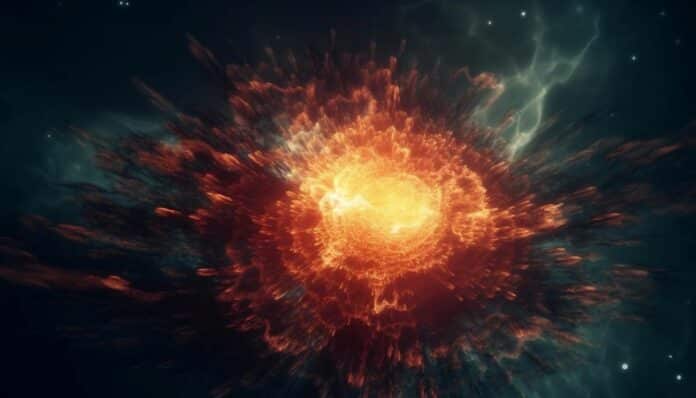For a long time, physicists have conjectured that there might be more to our cosmos than meets the eye. They have conjectured the existence of “dark matter,” which would be invisible to traditional techniques of observation, based on observations of gravitational effects on neighboring galaxies.
Nonetheless, the gravitational pull of the dark universe on stars lets us know that it exists. Dark matter has never appeared to have much of an impact on the visible universe aside from gravity.
Yet the relationship between these visible and invisible domains, mainly as the universe first formed, has remained an open question.
Now, Matthews Distinguished University Professor of Physics Pran Nath’s latest cosmological work explores how dark matter and the visible universe impacted one another at the universe’s birth. The study offers mounting evidence that these two supposedly distinct realms co-evolved.
Using computer models, scientists discovered that the visible and the hidden sectors likely co-evolved in the moments after the Big Bang, with profound repercussions for how the universe developed.
What’s the influence of the hidden sector on the visible sector?
Some anomalies don’t seem to fit the so-called “Standard Model” of the universe. It is erroneous to assume that the visible and hidden sectors are mutually exclusive, as this is predicated on the idea that they developed separately. Nath wishes to refute such an assumption.
In this new study, scientists tested this assumption by introducing some feeble interactions” between the two sectors into their models of the Big Bang. Though Nath notes that “we wanted to see what the effects would be on the visible sector as a whole, from the time of the Big Bang to the current time,” these insignificant interactions would not be sufficient to influence the results of, example, particle accelerator research.
Nath and his team found that dark matter‘s influence on the visible matter we are made of might significantly impact observable phenomena, even in the case of minor interactions between the two sectors.
Consider the Hubble Expansion, for example. It contains a “quite serious” differential between what the Standard Model predicts and what has been observed.
The temperature of the hidden sector at the time of the Big Bang is one crucial variable.
“We can be pretty sure that the visible sector was extremely hot when the Big Bang occurred.” According to Nath, “what we see is the remnant of that period of the universe” as it cools.”
However, Nath and his colleagues could predict both scenarios—a hidden sector that began hot and another that started cold—by examining the development of the two industries.
What they found was astonishing: both the hot and cold models were consistent with the visible sector we can see now, despite the models’ substantial discrepancies, which had significant implications for how the universe appeared in the early universe.
Existing measurements of the visible universe are insufficient to confirm which side the hidden sector fell on at the beginning — hot or cold.
It’s not that the visible universe doesn’t care about the distinction between a hot and cool hidden sector; instead, it’s just that we still need to do experiments with sufficient precision. Nath mentions the Webb Telescope as an illustration of the upcoming technology enabling such accurate observations.
The ultimate aim of all this modeling effort is to make more accurate predictions about the state of the universe, how it all works, and what discoveries await us as we delve deeper and deeper into the night sky.
As our experiments gain more accuracy, the questions baked into Nath’s models — was the hidden sector hot or cold? — will find their answers; those clarified models will help predict the solutions to ever-deeper questions.
“What’s the significance of this?” Nath asks. He says humans “want to find their place in the universe.” And more than that, “they want to answer the question, why is there a universe?”
“And we are exploring those issues. It is the ultimate quest of human beings.”
Journal Reference:
- Jinzheng Li and Pran Nath et al. Big bang initial conditions and self-interacting hidden dark matter. Physical Review D (2023). DOI: 10.1103/PhysRevD.108.115008
